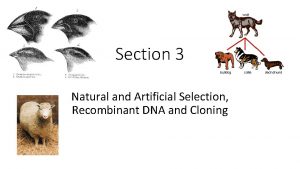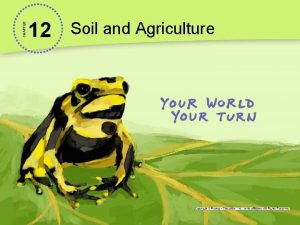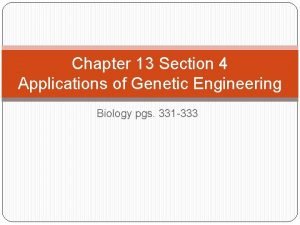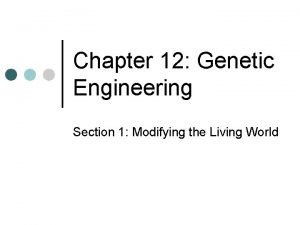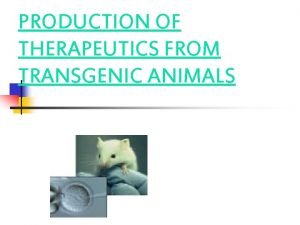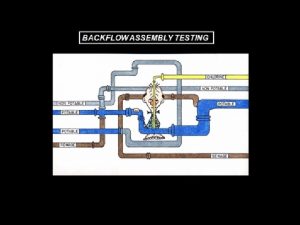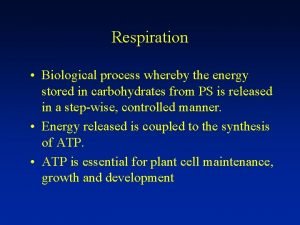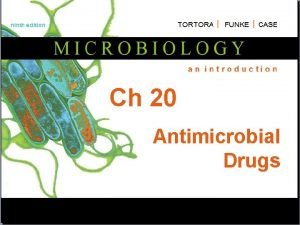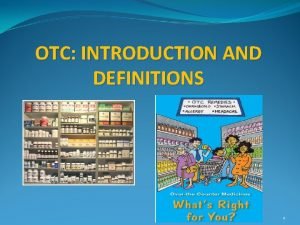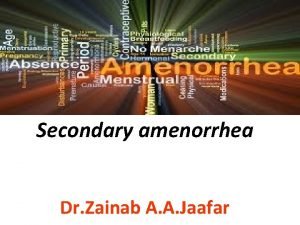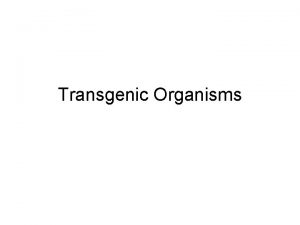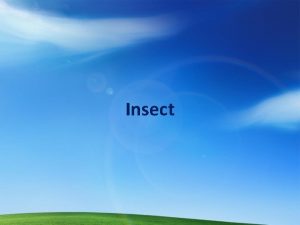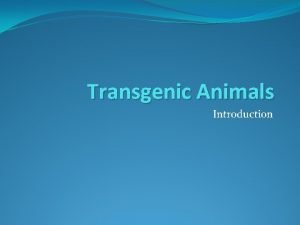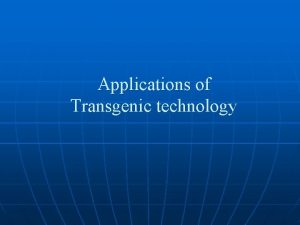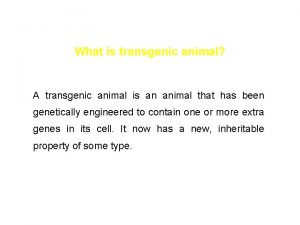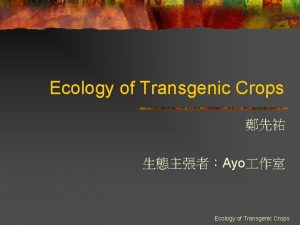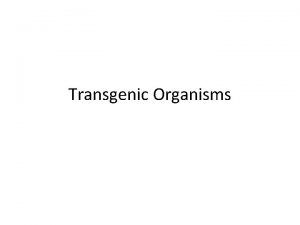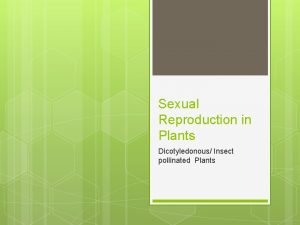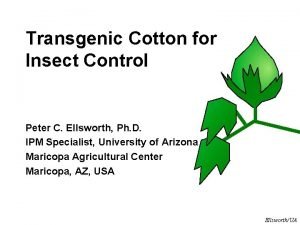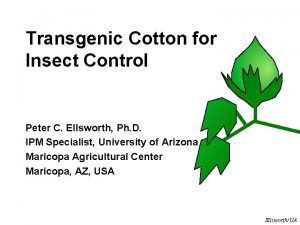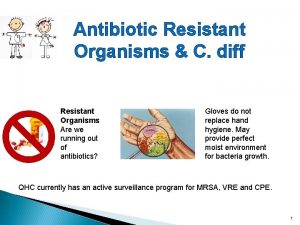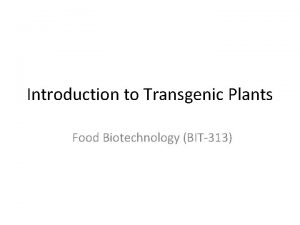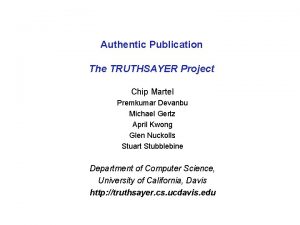Insect Resistant Transgenic Plants A Premkumar INTRODUCTION Insect

























- Slides: 25

Insect Resistant Transgenic Plants A. Premkumar

INTRODUCTION § Insect pest menace – lepidopterans to orthopterans § 37% loss in yield (damage - field crops and stored products) § Farmers rely on synthetic chemicals to eradicate the insect pests § Chemical pesticides – US $ 10 billion annually

Important pests of major crops Yellow stem borer Scirpophaga incertulas Rice Brown plant hopper Nilaparvata lugens Mustard aphid Lipaphys erysimi Chickpea Gram pod borer Helicoverpa armigera Pigeon pea Gram pod borer Helicoverpa armigera Cotton boll worm Helicoverpa armigera Sugarcane Top borer Scirpophaga nivella Groundnut leaf miner Stromopterix nertaria Potato Tuber moth Phthorimaea operculella Tomato Fruit borer Helicoverpa armigera Brinjal Shoot & fruit borer Leucinodes orbonalis




§ Massive application – adverse effects on natural predators – biomagnifications – environment degradation § Evolution of pesticide resistance insects § There is a need for development of alternative and environmental-friendly strategy to protect the crops § Attractive and alternative strategy – Development of Insect resistant transgenic plants


Basic requirements for genetic transformation Ø Target genome Ø Candidate gene Ø Plasmid vector to carry the gene Ø Tissue culture and regeneration system Ø Modification of foreign DNA to increase the level of gene expression

Ø Method to deliver the plasmid DNA into the target cell Ø Protocols to identify the transformed cell Ø Characterisation of putative transgenics plants at the molecular and genetic levels

Methods of transformation o Agrobacterium mediated gene transfer o Microprojectile bombardment o Microinjection o Electroporation o Sonication Assisted Agrobacterium mediated transformation


General transformation protocol Overnight Agrobacterium culture Sterile explants with dividing cells Transformation Wash Co-cultivate (3 days) Inoculate (30 mins) Transfer of t-DNA Addition of acetosyringone (bacterial attachment) Recovery of transgenic plants Transfer to regeneration medium plus selective antibiotics Regeneration of transgenic plants Transfer to medium with bactericidal antibiotics (cefotaxime) plus selective antibiotics (Kanamycin and hygromycin (months) Kill off Agrobacterium and select transgenic cells Transfer to medium with bactericidal antibiotics (days) Kill off Agrobacterium Eg: cefotaxime



Unique advantages of Agrobacterium mediated gene transfer ü Simple and poor man’s vector ü Precise transfer and integration of DNA sequences with defined ends ü A linked transfer of genes of interest along with the transformation marker ü Higher frequency of stable transformation with many singly copy insertion ü Low incidence of transgene silencing ü Ability to transfer long stretches of T-DNA (>150 Kb)


Novel genes used for genetic transformation of crop plant for insect resistance Ø Bacillus thuringiensis toxin genes - Insecticidal Crystal proteins (ICP) - Vegetative insecticidal proteins (VIP) Ø Proteinase inhibitors - Serine - Cysteine - Trypsin - Leucine aminopeptidase - Aspartic acid and metalloproteases

Alpha amylase inhibitors Non-proteinaceous Proteinaceous • Acarbose § Lectin like • Isocarbose § Knottin like • Acarviosine glucose § Cereal type • Hibiscus acid § Kunitz type • Cyclodextrins § Thaumatin like § - purothionins

Ø Plant lectins Ø Plant metabolic enzymes Ø Secondary plant metabolites Ø Insect chitinases Ø Insecticidal viruses Ø Genes from bacteria other than Bt

Some important Bt-transgenic crops Ali et al (2000) Cotton Cry 1 Ab Bollworms Corn Lopez et al Cry 1 Ab European corn borer (2000) Colorado potato beetle Jaeger et al (2000) Potato Cry 3 a Rice Stem borers and leaf Masoud et al Cry 1 Ab folders (1996) Soybean Cry 1 Ac Soybean looper Stark et al (1997)

Comparison of two kind of pesticides Chemical Biological Criteria pesticide Safety Little or none Often high Environmental friendliness Not at all High Activity spectrum Can be broad Selective and specific Field efficacy High Variable Environmental persistance High toxic residue Little

Predator toxins Spiders, Scorpions - Neurotoxins Gene pyramiding • Effective weapon in pest control • Deploying genes with different modes of action in the same plant

Concluding remarks • GM plants-natural biodegradable proteinstarget specific compounds-environment friendly- not harmful-feasible-harmless to natural enemies • Major impact on agriculture throughout the world • Plants expressing Bt gene for insect resistance- sorghum-pigeon pea-cow pea-chick pea-ground nut

THANK YOU
 Neha premkumar
Neha premkumar Packaging
Packaging Transgenic organism definition
Transgenic organism definition Artificial selection
Artificial selection Possible transgenic maize in oaxaca mexico
Possible transgenic maize in oaxaca mexico Transgenic bacteria
Transgenic bacteria Transgenic bacteria
Transgenic bacteria Transgenic
Transgenic Biology
Biology Spill resistant vacuum breaker
Spill resistant vacuum breaker Cyanide-resistant respiration slideshare
Cyanide-resistant respiration slideshare Resistant materials tools
Resistant materials tools Collision resistant hash function
Collision resistant hash function Collision resistant hash function
Collision resistant hash function Fiber optic cable rodent protection
Fiber optic cable rodent protection Kyloc usmc
Kyloc usmc Scbf design example
Scbf design example Design of seismic-resistant steel building structures
Design of seismic-resistant steel building structures Nucleoside analogs
Nucleoside analogs Tamper resistant packaging definition
Tamper resistant packaging definition Fire resistant cable thai yazaki
Fire resistant cable thai yazaki Flame resistant lab coat amazon
Flame resistant lab coat amazon Resistant ovary syndrome definition
Resistant ovary syndrome definition Tuned mass damper
Tuned mass damper Chapter 19 disease transmission and infection prevention
Chapter 19 disease transmission and infection prevention Arc duct switchgear
Arc duct switchgear



